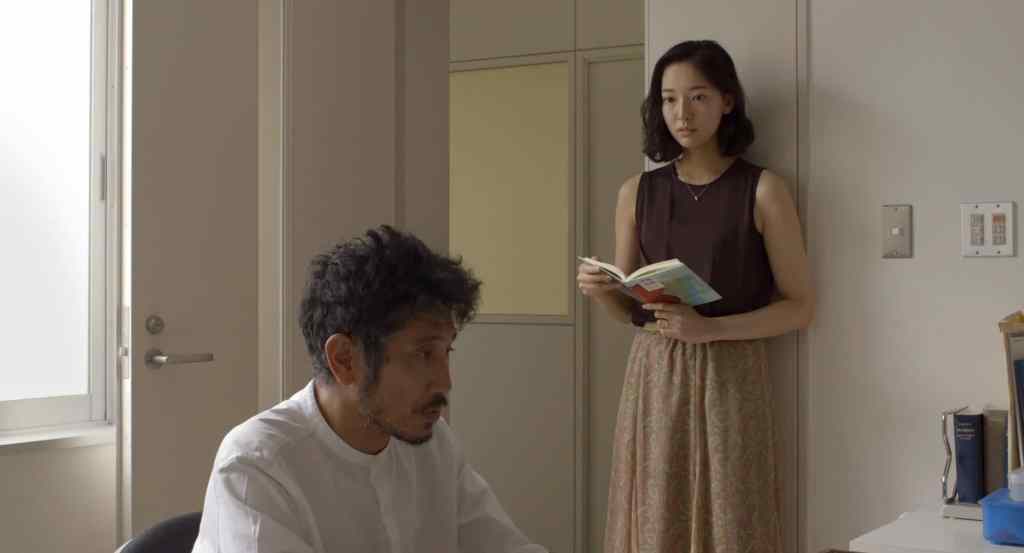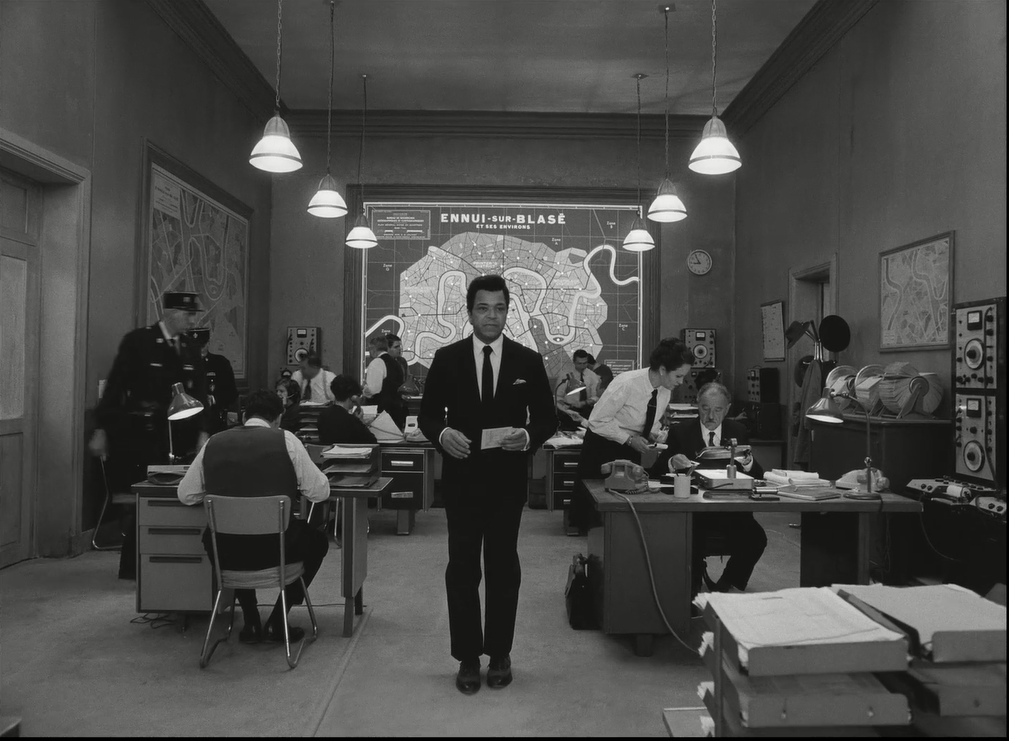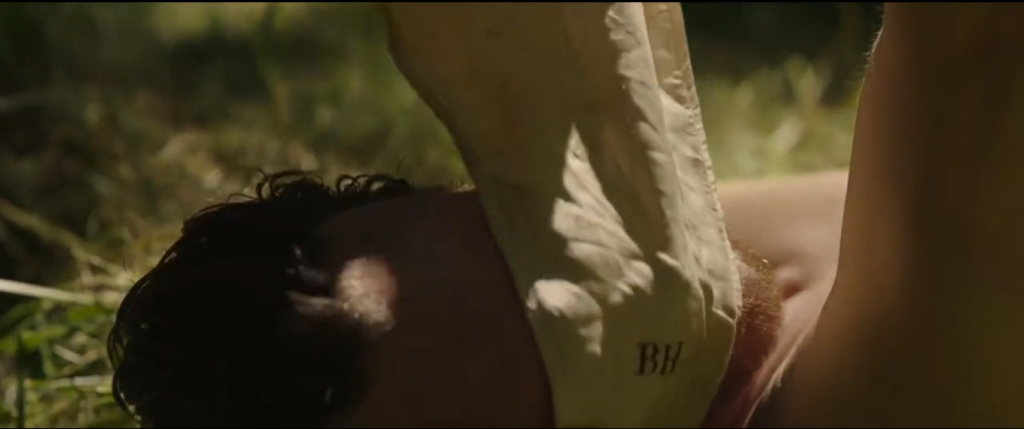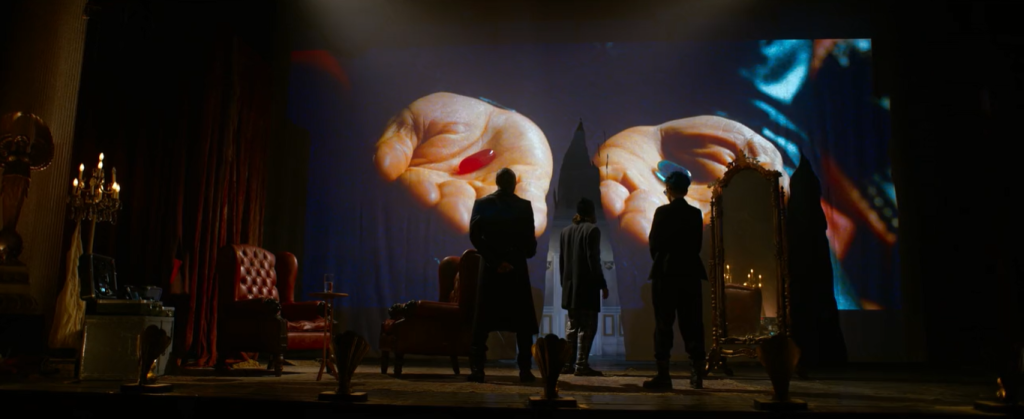Looking back at my list for last year, I saw just 3 of the films featured in a cinema, which really drives home just how much viewing was done at home on a tv or my laptop. This year, it’s almost 50/50, with cinema viewing just taking it. It was a real joy to be able to go *Tom Cruise voice* back to the movies on a regular schedule, and in particular have an in-person London Film Festival experience where I saw a good deal of what features below. As usual, there were a few films that I wasn’t able to get to before the year was up — Licorice Pizza (which ended up disappointing me anyways), Red Rocket and Parallel Mothers being the big three in my mind — but also as usual, I’m quite happy with how this list ended up coming together. So presenting my top 25 of the year:

25. The Lost Daughter
Snuck onto the list just under the wire, hopefully Netflix releasing this on the last day of the year won’t cause it to get buried by the algorithm. (Although considering by the time you read this it will have been over two weeks since then), maybe it already has. Regardless, this is what you hope for when performers turn to directing in that they utilise the foundations of rock-solid material — in this case, Maggie Gyllenhaal’s adapting a slippery and thorny Elena Ferrante novel — and allow their own actors to inhabit the space and build out the characters. Olivia Colman, Dakota Johnson and Jessie Buckley (the latter of whom is the best she’s ever been and finally made me see the hype around her) work as a collective to strike up a complex portrait of motherhood from multiple angles, one that doesn’t shy away from acknowledging not everyone is right to handle life’s most entrenched expectations.

24. Procession
aka The Act of Healing. Robert Greene looks at cinema, the sheer capability of storytelling potential found within and believes in both without reducing them to saccharine ends. Collaboration is communication.

23. Memoria
The botched release strategy in the middle of an ongoing pandemic hasn’t made this easy, but as long as you can, you’ve got to see this big. And you’ve got to see it loud. To let that sound burrow its way into your head just as it does to Tilda Swinton’s Jessica Holland. It needs to make you feel small in order to make you think about how big the universe really is in order to make you think about your place in it all. The guy diving to the ground while in the middle of crossing the road has not strayed far from thought since I saw him do it.

22. The Many Saints of Newark
A work of anti-nostalgia; the past existing only to remind that it traps us. In about five years, every Twitter personality that loves the show but said this was like a miniseries cut down to movie-length will love it too. I’ll welcome them with open arms, but I’ll also never forget that I was one of the people there from the jump. Wrote a touch more here about the nature of prequels, the line between performances and impersonations and how David Chase finds a new way to link the damning ending to the original series to its first conversation between Tony and Dr. Melfi.

21. The Inheritance
Blurs the line between realism and fiction while also observing the arc from personal inheritance to a communal one within the space of the house to then passing knowledge onto its audience. Creating a better world might not be something that we can accomplish and Asili acknowledges this by leaving us with a reminder to pass on the teachings and methods to the next generation in the hopes that they might be the ones that can.

20. All Light, Everywhere
Imagemaking has been weaponised in order to aid the agenda of the powerful. A company called Axon makes both tasers and body cams. Like Alice said in Resident Evil: Retribution, “It’s just like a camera. Point and shoot.”

19. Drive My Car
When discussing the credits-drop some forty minutes into the film, what people neglect to mention is how this is indicative of Ryusuke Hamaguchi bridging his long-form feature-making (despite being three hours, he has made two longer works already in the four+ hour Intimacies and Happy Hour which is just shy of five and a half) and his shorts. The opening prologue that centers on the Kafuku marriage could stand alone in theory as its own narrative instance capped off by a grim irony, yet it accrues further weight from how the following two hours and change continue to explore the nature of communication in a variety of different ways — rehearsals, the drives with Watari and the overlap between these interactions and those with the play’s performers — which in turn are more charged knowing this is all spinning out of a conversation that could never be had. That second stretch spent with Takutsuki is the most entrancing in my book.

18. Barb & Star Go to Vista Del Mar
The greatest movie that ZAZ never made. Always finds the time to throw in another gag from a direction you’d never expect. In honour of Richard Cheese, we’re gonna take a short break. And we’re back; everyone commits to every bit, but perhaps none moreso than Jamie Dornan who relishes in an absurdity he’s never been allowed to play before. Already looking forward to the day that this gets a screening at somewhere like the Prince Charles Cinema and I can experience it with dozens of others that are on its wavelength.

17. Swimming Out Until the Sea Turns Blue
An elegiac ode to a country and a people that are no longer are. Which could be said of every one of Jia’s works, as his filmography continues to spiral and stack upon itself, so it’s a good thing that they’re all good. If only every talking head documentary could be this considerate with regards to its staging.

16. Wheel of Fortune and Fantasy
Starting to see more and more people say they prefer this to Drive My Car and proud to say that I’m one of them. The narrative conceits of each of the three shorts all recall Hong at points, and in turn Rohmer’s Les Rendez-vous de Paris. As with those two great directors, this is a carefully modulated piece of work designed to center the performances in, but his style also leads to moments like a quick zoom-in, a door closing and a set-up from thirty minutes prior being mirrored all being pulled off with such grace that they have major emotional ramifications for the texture of the scenes they can be found within. It is the sign of a director completely in control of his craft and methods that instances of relative simplicity can leave you awestruck. What a year’s he had.

15. Old
A grant improvement on its source material as M Night finds ways to shoot this that no-one else would ever think of. Some sole scenes contain more formal innovation than most other movies, see: freeze tag. So glad that he and Mike Gioulakis found each other. Just absolutely goes for it, right down to his obligatory cameo which should not be forgotten when you’re all putting together Best Supporting Actor ballots. Went longer on this here.

14. The Green Knight
Just gorgeous to look at, which was enough to keep me entranced through to the grandeur and bravado of that final sequence, which served to clarify just how much I actually liked this. Finally, Dev Patel has starred in a good film.

13. No Sudden Move
Steven Soderbergh doing what he can do in his sleep, yet he ensures that it never comes across as sleepwalking. The fisheye lensing distorts period Detroit (and rules, actually) as if the actual walls are closing in on those caught in this capitalist affair. It’s a wholly game cast that allows for a wide range of types of performance, from Julia Fox to David Harbour to Don Cheadle. Ed Solomon’s script achieves a liveliness through its various tonal shifts and maintains a perverse levity throughout that not many could pull off. As nice as it is that Soderbergh’s found a place where he can knock out a movie every nine-months or so — The Kimi trailer just dropped the other day — it’s a shame that this wasn’t a theatrical release because it would play like gangbusters as an eventual cable movie.

12. The French Dispatch
Walked out of seeing this at London Film Fest wondering if this was lacking a certain emotional power beyond the connection between Benicio del Toro and Léa Seydoux prisoner/jailor romance, only for it to immediately start growing on me and for a ensuing rewatch to get me on board with the Jeffrey Wright story being the best of the three. The majority of the anthology’s segments are some of Wes Anderson’s most downright prosaic sequences and for any other filmmaker this would be apparent. Instead, they’re coupled with some of his most dense visual stylings and that sheer sensory overload means it makes sense that no everyone can find a way into it. But if you let him take you within the nesting doll structure that makes up the macro structure of the anthology format starting in the final moments of the magazine’s existence and the micro of how the stories are relayed to us, you’ll find a host of characters caught up in the act of another’s creation, trying to find a way to express themselves without smothering this or themselves in the process. They’re a makeshift community that managed to find a home, only for it now to be on the verge of closing up shop. Ennui is not just a state of mind, but a place too. I wonder if they’ll end up leaving either.

11. The Souvenir: Part II
Hogg’s precision in processing her grief = Thesis.
Julie’s struggle in finding the words to express her’s, seeing the images that might be able to but still unsure about how to convey these to others = Antithesis.
This film = Synthesis.
The outpouring of emotion that comes with seeing this realised is followed shortly after by the morose knowledge that once you start trying to process these feelings you’ll likely never stop. The first had an impeccable craft to it yet never quite landed the wallop it wanted to on me, while this knocked me flat. Of a piece with that first part, while still managing to be its own thing. Namely, it’s more of an ensemble — performers like Charlie Heaton, Joe Alwyn and the powerhouse Richard Ayoade all come in for a spell, knock it out of the park and disappear just as quickly as they said hello — without sacrificing the primary goal of charting Honor Swinton Byrne’s coming into her own as a director. Hogg’s homage to the Archers breaks from her otherwise established sense of naturalism at just the right time to open this up even more.

10. Cry Macho
One of the most emotional films of the year, simply for the fact that this could be the last time we ever see Clint Eastwood on screen. It’s a pleasure to watch him as he shows no concern about hiding his age on screen, even when it seems counterintuitive to the narrative, which is where a lot of people seem to be getting hung up. Of course, it’s the man himself, not the source material, which is the text of the work; the last cowboy, the only actor nowadays we wholly believe in that situation. When they reach the cantina, it basically turns into a Late Hawks picture, which is fine by me. Just means more time to hang out in his presence. Maybe he’s still got another one or two in the tank, but if this was the last outing in front and behind the camera, there are worse ways to go than that final fade to black.

9. Petite Maman
When you’re eight, thirty-one seems so far away. Never would’ve expected Céline Sciamma to have a sci-fi in her, but here it is and it’s her best to boot.

8. Days
This was my first Tsai Ming-liang back when I saw it at London Film Fest 2020, however in that time, it has lost absolutely none of its acuity and tenderness. He captures moments of modern living that manage to be so personal despite their relative mundanity prior to Lee Kang-sheng and Anong Houngheuangsy’s paths converging that the sheer act of watching them feels like intruding, even more so when they actually do. Even the rain that opens the film, as it clatters against the roof above; like you’re actually there.

7. Spencer
Complete understand how people look at this Steven Knight script only to see a constant thrum of symbols, ideas and metaphors yet that’s reflective of what Diana became in the public and private eyes. The one that’s lingered most is the idea of currency, of a woman trying not to be old money, all the while the royal family tries to keep themselves and their traditions in circulation. Pablo Larrain’s previous women’s pictures Jackie and Ema have ranked highly in their respective years for me, what gives this the edge over them both is that remarkable KStew performance. Amidst all the ideas encased within the chilly Gothic of Sandringham, she’s nevertheless given a great freedom compared to the Natalie Portman and Mariana Di Girolamo of those aforementioned works because she’s allowed to be messier than the widow trying to keep it together and a mother waiting until the last moment to reveal her hand; she spirals like the twisting thoughts in her head and the movie’s. She’s a ghost who doesn’t know she’s dead and appropriately haunting.

6. West Side Story
The ambitious movie brat who was there when New Hollywood got replaced and the elder statesman in his late — and perhaps pop cinema’s most fallow — period collaborate on a dazzling display of how his formal prowess has only improved amidst the wreckage. Obviously echoes to the original, likewise to the teens of Nicholas Ray, but also to The Quiet Man; not visually like ET‘s on tv crosscutting, more in terms of Tony’s awareness of doing harm and the subsequent attempt to move beyond that. Though the colours aren’t as bright as they once were, they’ve long since stained the streets like blood. Reminds you what it’s like when someone puts effort into movies; musicals; remakes, and makes it look easy all the same.

5. The Power of the Dog
Trades Monument Valley for the uncanny valley in two key respects. The first being Benedict Cumberbatch’s central performance, Jane Campion gets one out of him which is far more rugged than anything the typically fussy actor has produced before, and very distinctly a work of performance. Phil Burbank as he plays him always has a layer of artifice attached, you have the sense that he’s putting on his displays of masculinity. Think it would be wrong to claim this as deliberate miscasting, instead the tension that comes from this enhances the melodrama. Second, this looks like no other Western that I can think of as a result of shooting in New Zealand. The terrain dwarfs these characters and as stable as it first appears, it is continually shaken up by the shifting power dynamics. And as with Spencer, a great Jonny Greenwood score heightens the anxiety and tension of the experience.

4. The Matrix Resurrections
The only perfect franchise continues to be just that. “Love is the genesis of everything.” In an age where actors like Alfred Molina and Willem Dafoe are being digitally made to look younger, how beautiful this is to place so much on Keanu Reeves and Carrie-Anne Moss’s faces in order to see how they’ve changed.

3. Bergman Island
The generosity that Mia Hansen-Løve affords to her characters shines through in the pairing of Mia Wasikowska and Anders Danielsen Lie in the film within a film. It could easily feel like an obligation, but they might even feel more real a couple than Vicky Krieps and Tim Roth. Thrilling in a way that she’s never made me feel before, the moment you realise that she’s doing a Goodbye, First Love quasi-sequel in addition to the metatextual conceits in the film itself takes it up another level on top of all that. Løved it.

2. Annette
Leos Carax and the Sparks Brothers constructed a dense simulacrum of artifice that calls back to early filmmaking techniques just as much as the current cinema of green screened-Atlanta-warehouses standing in for everything, even Atlanta warehouses, just to see how much they make you feel when you can get past that right upfront. Went longer on this at the time as a result of a very special viewing experience, this piece might as well be called On Cinema and The Cinema.

1. Undine
Christian Petzold operating at his most brazenly romantic as he reconfigures a myth meant to dissuade straying to a modern day narrative about it being okay to break apart, go your separate ways and hopefully move on. If Transit is about being displaced in time, this is that for space as so many scenes take place around train journeys and stations, cafes and a museum. It’s not just a love of Vertigo leading to these doublings, they’re also interstitial spaces. Points of transition. No-one’s hanging around them forever. Hope he works with Frank Rogowski and Paula Beer forever because they’re doing dynamite stuff together, that scene where she just lectures to him in the apartment captures what it is when you care so much for someone that you hang on their every word.

